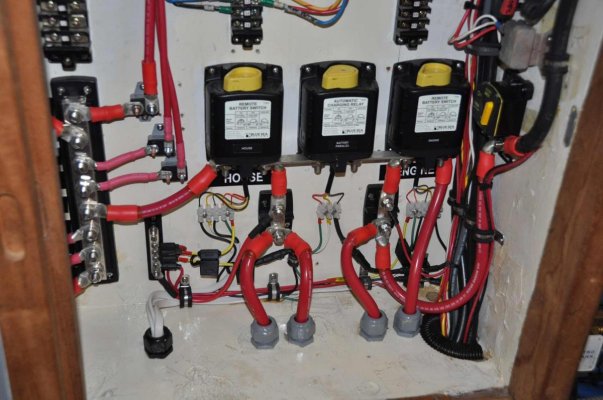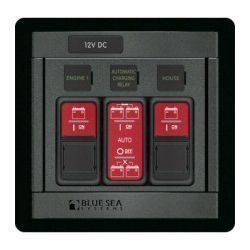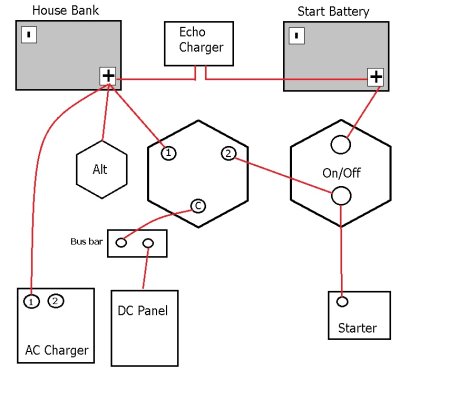My Yandina combiner also operates as Delfin described, albeit at slightly different voltage points. Here's the Yandina manual that fully describes the operation in detail. They have some good schematics for various configurations.
http://www.yandina.com/acrobats/C150Data.pdf
Mine also has the option for a manual switch to manually open (always off) or close (always on) the combiner. With each engine's alternator directly connected to the house bank and start battery, I normally run with the combiner defeated/off. I have not connected the manual close feature since that defeats the purpose of having a combiner.
My single bank shore charger is connected to the house bank only. If the house bank needs a shore charge but the start battery is full as determined by my SOC aux batt voltage, I'll place the switch to off so the charge only goes to the house bank.
At the dock, the house is always charging on shore power. If the start battery is full and I expect to return to the boat in a week or two, I'll leave the start battery off the charger since it's just fine for that period with no parasite loads.
I also have two 1/A/2/O battery switches located just outside the ER door. On my boat, the combiner directs the start charge only. All loads are controlled by the battery switches which normally are not moved. If I need to combine bank loads or start with the house battery, I can move these switches for the temporary change. I only had to use them once when the boat came out of extended maintenance on the hard and the start battery was low.
PM me if you'd like a schematic of my electrical system to help with the layout of yours. I've posted it here several times in the past. Just can't put my finger on it right now.
john21ct, you seem to post regularly and authoritatively with book or google knowledge but with little or no experience with the systems in question. I've asked you publicly and privately about your experience 4-5 times and you have refused to answer. I've seen others ask and you have refused to answer. Do you own a boat? If I'm wrong, I apologize, but it seems those with actual experience in this are being told they are 100% wrong by someone with no stated experience. That's not right.
FYI, Delfin is one of our locally respected experts in many areas and I appreciate his insight and knowledge. If you want to tell us we're wrong, no problem...we're not always right, but you ought to have experience and credentials and know what you're talking about first.




